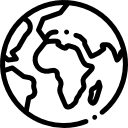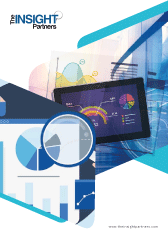$4450
$3560
The skin cancer treatment market size is projected to reach US$ 19.53 billion by 2031 from US$ 11.79 billion in 2024. The market is expected to register a CAGR of 7.57% during 2025–2031.
Skin Cancer Treatment Market Analysis
The surging prevalence of skin cancer and growing approvals and robust pipeline of advanced therapies are propelling the use of skin cancer treatment. According to the American Cancer Society, there were ~212,200 new melanoma cases in the US in 2025, with 107,240 in situ and 104,960 invasive cases, ranking melanoma as the fifth most common cancer. This increasing incidence of skin cancer, such as melanoma, has created the demand for advanced therapies such as checkpoint inhibitors. Additionally, the adoption of personalized and combination therapies presents a significant opportunity for the skin cancer treatment market.
Skin Cancer Treatment Market Overview
North America is projected to dominate the skin cancer treatment market with the largest share, and Asia Pacific is expected to register a significant CAGR during the forecast period. The region includes prominent markets such as China, Japan, India, South Korea, Australia, and the broader Asia Pacific, and accounts for a significant share in the region’s growth. The incidence of skin cancer in some Asian countries is lower than in Western countries, which can be due to better melanin composition of the population. The 2024 report of the National Cancer Center of China states that basal cell carcinoma and squamous cell carcinoma are increasing in incidence, especially in coastal provinces like Fujian and Guangdong.
The Australian Institute of Health and Welfare (AIHW) reports that in 2023, over 1.1 million Australians underwent treatment for nonmelanoma skin cancers under the Medicare Benefits Schedule (MBS). The same report mentioned that melanoma was responsible for ~15,000 new cases and over 1,300 deaths in 2022.
Melanoma cases are on a steady rise in Japan, especially among the elderly, as reported by the National Cancer Center. According to the latest update from the cancer registry in 2024, skin cancer is one of the top 20 common cancers in Japan with an increasing trend in incidence, especially in males aged 60 and above.
Customize Research To Suit Your Requirement
We can optimize and tailor the analysis and scope which is unmet through our standard offerings. This flexibility will help you gain the exact information needed for your business planning and decision making.
Skin Cancer Treatment Market: Strategic Insights

Market Size Value in US$ 10,388.57 million in 2022 Market Size Value by US$ 18,277.71 million by 2030 Growth rate CAGR of 7.32% from 2022 to 2030 Forecast Period 2022-2030 Base Year 2022

Mrinal
Have a question?
Mrinal will walk you through a 15-minute call to present the report’s content and answer all queries if you have any.
 Speak to Analyst
Skin Cancer Treatment Market Drivers and Opportunities
Speak to Analyst
Skin Cancer Treatment Market Drivers and Opportunities
Customize Research To Suit Your Requirement
We can optimize and tailor the analysis and scope which is unmet through our standard offerings. This flexibility will help you gain the exact information needed for your business planning and decision making.
Skin Cancer Treatment Market: Strategic Insights

| Market Size Value in | US$ 10,388.57 million in 2022 |
| Market Size Value by | US$ 18,277.71 million by 2030 |
| Growth rate | CAGR of 7.32% from 2022 to 2030 |
| Forecast Period | 2022-2030 |
| Base Year | 2022 |

Mrinal
Have a question?
Mrinal will walk you through a 15-minute call to present the report’s content and answer all queries if you have any.
 Speak to Analyst
Speak to Analyst
Market Drivers:
Expanding Approvals and Pipeline of Advanced Therapies:
Expanding approvals and a robust pipeline of advanced therapies, including new immunotherapy and targeted therapy options, provide more choices for patients with advanced or aggressive skin cancer.Rising Prevalence of Skin Cancer:
The increasing number of melanoma and nonmelanoma skin cancer cases is fueling the growth of the skin cancer treatment market. This steady growth of skin cancer cases is becoming one of the primary factors steering the growth and diversification of the market.Rising Awareness about Early Detection:
Skin cancer, particularly melanoma, is highly treatable when detected early. Early detection allows for less invasive and more effective treatments, such as surgical excision.
Market Opportunities:
Expansion in Emerging Economies: Several countries in Asia Pacific, Latin America, and Africa offer growth opportunities in the skin cancer treatment market due to the increasing number of skin cancer cases and awareness about early detection
.Rising Medical Tourism:
Increasing medical tourism in developing countries such as China, India, Indonesia, Brazil, and Mexico offers affordable advanced care and treatments, 50–70% less than in the US and European countries.Personalized and Combination Therapies:
Advanced therapies such as neoadjuvant immunotherapy (pre-surgical) funded under public healthcare schemes can dramatically improve survival outcomes in high-risk patients.
Skin Cancer Treatment Market Report Segmentation Analysis
The skin cancer treatment market is divided into different segments to give a clearer view of how it works, its growth potential, and the latest trends. Below is the standard segmentation approach used in most industry reports:
By Type:
Melanoma:
Melanoma is the second largest segment by type, widely driven by the increasing incidence of melanoma worldwide. WHO reported in 2022 that ~330,000 new melanoma skin cancer cases occur worldwide every year.Nonmelanoma:
Nonmelanoma skin cancers are more frequent than melanoma skin cancer. Nonmelanoma comprises Merkel cell carcinoma, basal cell carcinomas, and squamous cell carcinomas. These are completely curable through surgery and are rarely lethal.
By Therapy Type:
Immunotherapy:
Clinical data shows immunotherapy treatments such as pembrolizumab have provided an approximately 34% 5-year overall survival rate in advanced melanoma patients, a remarkable improvement over older method.Targeted Therapy:
Targeted therapy, which is a step above old-school chemotherapy, attacks specific molecular pathways responsible for cancer cell growth. The most groundbreaking success is the discovery of BRAF gene mutations, which are present in roughly 40-60% of melanoma cases.Chemotherapy:
The main goal of chemotherapy is to eliminate cancer cells that divide quickly by using drugs that are toxic to cells. However, unlike targeted therapies, chemotherapy does not distinguish between healthy cells and cancer cells. As a result, chemotherapy is associated with a number of adverse effects.Radiation Therapy:
In the case of skin cancer, patients who are not eligible for surgery or systemic treatments can benefit from radiation therapy. In advanced or inoperable tumors, radiation therapy also takes a palliative role in relieving symptoms such as pain, bleeding, or obstruction.Others:
In addition, there are other materials such as neoprene and polyisoprene. Neoprene is widely used for making surgical gloves, providing an excellent protection barrier and proper fit and feel.
By End User:
- Dermatology Clinics
- Hospitals
- Diagnostics and Cancer Care Centers
- Others
By Geography:
- North America
- Europe
- Asia Pacific
- Latin America
- Middle East & Africa
The skin cancer treatment market in North America is expected to hold a significant share of the market. An increasing number of surgical procedures and business expansion strategies by the market players are factors likely to drive the market.
Skin Cancer Treatment Market Report ScopeSkin Cancer Treatment Market Share Analysis by Geography
Asia Pacific is expected to grow the fastest in the next few years. Emerging markets in Latin America, the Middle East, and Africa also have many untapped opportunities for skin cancer treatment providers to expand.
The skin cancer treatment market grows differently in each region. This is because of factors such as increasing prevalence of chronic diseases, growing surgical procedures, and increasing adoption of infection-control strategies. Below is a summary of market share and trends by region:
1. North America
Market Share:
Holds a significant portion of the global marketKey Drivers:
- The high incidence of melanoma and other skin cancers owing to the excessive exposure to UV radiation in certain areas.
- The presence of well-developed treatment options including immunotherapies and targeted therapies.
- High healthcare expenditures, and structured reimbursement frameworks are also notable.
Trends:
Growing use of personalized medicine, the development and strong investment in new biologics and therapeutics, and ample funding for new drug discovery.
2. Europe
Market Share:
A considerable portion of the market is attributable to advanced healthcare and the quick uptake of new treatmentsKey Drivers:
- The increasing number of non-melanoma and melanoma skin cancer cases.
- Favorable government initiatives for cancer awareness and screening programs.
- Availability of advanced radiotherapy technologies and clinical trial networks.
Trends:
Focus on precision oncology, combination therapy approaches (immunotherapy + targeted therapy), and integration of AI in dermatology diagnostics
3. Asia Pacific
Market Share:
Fastest-growing region with a rising market share every yearKey Drivers:
- Rapid improvements in healthcare infrastructure across China, India, and Southeast Asia.
- A growing patient population due to rising outdoor exposure and limited use of protective measures.
- Increasing government funding for cancer care and expansion of insurance coverage.
Trends:
Increase in medical travel for affordable cancer treatments, utilization of post-modern diagnostic imaging tools, and increasing collaborations with international pharmaceutical companies.
4. South and Central America
Market Share:
Developing market with consistent growth.Key Drivers:
- Increasing incidences of skin cancer, particularly in high UV index regions like Brazil and Chile.
- Expanding access to dermatology specialists and cancer care centers.
- Import of advanced skin cancer drugs and equipment.
Trends:
Increased focus on awareness campaigns, medical tourism for affordable treatment, and gradual entry of immunotherapies into local markets.
5. Middle East and Africa
Market Share:
Although small, but growing quicklyKey Drivers:
- Expanding healthcare infrastructure supported by government funding.
- Rising awareness campaigns around cancer prevention and early detection.
- Increasing collaborations with global pharma players for clinical trial expansion.
Trends:
Government-backed initiatives for skin cancer prevention, investments in advanced oncology centers, and growing use of tele-dermatology for remote diagnosis.
Skin Cancer Treatment Market Players Density: Understanding Its Consequences on BusinessHigh Competition and Density of Markets
High Market Density and Competition
The competition is fierce with established companies such as Sanofi, AstraZeneca PLC, and Eli Lilly and Company. Regional and niche providers such as Sun Pharmaceutical Industries Ltd (Asia Pacific) and Takeda Pharmaceutical (Asia Pacific) also add to the competitive landscape across different regions.
This high level of competition urges companies to stand out by offering:
- Advanced Products
- Value-added services such as customization and sustainable solutions
- Competitive pricing models
- Compliance with regulatory guidelines
Opportunities and Strategic Moves
- Focusing on developing and clinically investigating novel combination therapies.
- Companies are moving towards noninvasive therapies such as topical and photodynamic therapy that reduce recovery time and side effects
- Established companies partner with biotechs, academic research institutions, and healthcare providers to hasten the development of therapies and their clinical adoption.
Major Companies Operating in the Skin Cancer Treatment Market Include:
- Merck KGaA
- Pfizer Inc
- Novartis AG
- Bristol-Myers Squibb Co
- Amgen Inc
- Hoffmann-La Roche Ltd
- Regeneron Pharmaceuticals Inc
- GSK Plc
- Iovance Biotherapeutics Inc
- Genentech Inc
Disclaimer: The above companies are not listed in a ranked order.
Other companies analysed during the course of research:
- Sanofi
- Sun Pharmaceutical Industries Ltd
- Eli Lilly and Company
- AstraZeneca PLC
- Takeda Pharmaceutical Company Limited
- Ipsen Pharma
- Varian Medical Systems Inc.
- Kyowa Kirin Co. Ltd.
- Elekta AB
- Aqua Pharmaceuticals
- iCAD Inc.
- AB Science
- Cellceutix Corporation
- Eisai Co. Ltd.
- Otsuka Pharmaceutical Co. Ltd.
Skin Cancer Treatment Market News and Recent Developments
- US Food and Drug Administration Approved Opdivo (nivolumab) as Adjuvant Treatment for Eligible Patients with Completely Resected Stage IIB or Stage IIC Melanoma.
- Novartis signed US$ 20 million licensing deal with Erasca to take the naporafenib melanoma therapy into mid-stage development.
Skin Cancer Treatment Market Report Coverage and Deliverables
The "Skin Cancer Treatment Market Size and Forecast (2021–2031)" report provides a detailed analysis of the market covering below areas:
- Skin Cancer Treatment Market size and forecast at global, regional, and country levels for all the key market segments covered under the scope
- Skin Cancer Treatment Market trends, as well as market dynamics such as drivers, restraints, and key opportunities
- Detailed PEST and SWOT analysis
- Skin Cancer Treatment Market analysis covering key market trends, global and regional framework, major players, regulations, and recent market developments
- Industry landscape and competition analysis covering market concentration, heat map analysis, prominent players, and recent developments for the Skin Cancer Treatment Market
- Detailed company profiles

Report Coverage
Revenue forecast, Company Analysis, Industry landscape, Growth factors, and Trends

Segment Covered
Type, Therapy, End User, and Geography

Regional Scope
North America, Europe, Asia Pacific, Middle East & Africa, South & Central America

Country Scope
This text is related
to country scope.
Frequently Asked Questions
The skin cancer treatment market is estimated to reach a value of US$ 19.53 billion by 2031.
North America dominated the market in 2024.
The skin cancer treatment market is estimated to register a CAGR of 7.57% during the forecast period.
Merck KGaAPfizer Inc, Novartis AG, Bristol-Myers Squibb Co, Amgen Inc, F. Hoffmann-La Roche Ltd, Regeneron Pharmaceuticals Inc, GSK Plc, Iovance Biotherapeutics Inc, Genentech Inc are among the key players operating in the skin cancer treatment market.
The increasing incidence of skin cancer and rising product approvals are among the noteworthy factors contributing to the market growth.
The List of Companies - Skin Cancer Treatment Market
- Merck KGaA
- Pfizer Inc
- Novartis AG
- Bristol-Myers Squibb Co
- Amgen Inc
- F. Hoffmann-La Roche Ltd
- Regeneron Pharmaceuticals Inc
- GSK Plc
- Iovance Biotherapeutics Inc
- Genentech Inc
The Insight Partners performs research in 4 major stages: Data Collection & Secondary Research, Primary Research, Data Analysis and Data Triangulation & Final Review.
- Data Collection and Secondary Research:
As a market research and consulting firm operating from a decade, we have published many reports and advised several clients across the globe. First step for any study will start with an assessment of currently available data and insights from existing reports. Further, historical and current market information is collected from Investor Presentations, Annual Reports, SEC Filings, etc., and other information related to company’s performance and market positioning are gathered from Paid Databases (Factiva, Hoovers, and Reuters) and various other publications available in public domain.
Several associations trade associates, technical forums, institutes, societies and organizations are accessed to gain technical as well as market related insights through their publications such as research papers, blogs and press releases related to the studies are referred to get cues about the market. Further, white papers, journals, magazines, and other news articles published in the last 3 years are scrutinized and analyzed to understand the current market trends.
- Primary Research:
The primarily interview analysis comprise of data obtained from industry participants interview and answers to survey questions gathered by in-house primary team.
For primary research, interviews are conducted with industry experts/CEOs/Marketing Managers/Sales Managers/VPs/Subject Matter Experts from both demand and supply side to get a 360-degree view of the market. The primary team conducts several interviews based on the complexity of the markets to understand the various market trends and dynamics which makes research more credible and precise.
A typical research interview fulfils the following functions:
- Provides first-hand information on the market size, market trends, growth trends, competitive landscape, and outlook
- Validates and strengthens in-house secondary research findings
- Develops the analysis team’s expertise and market understanding
Primary research involves email interactions and telephone interviews for each market, category, segment, and sub-segment across geographies. The participants who typically take part in such a process include, but are not limited to:
- Industry participants: VPs, business development managers, market intelligence managers and national sales managers
- Outside experts: Valuation experts, research analysts and key opinion leaders specializing in the electronics and semiconductor industry.
Below is the breakup of our primary respondents by company, designation, and region:

Once we receive the confirmation from primary research sources or primary respondents, we finalize the base year market estimation and forecast the data as per the macroeconomic and microeconomic factors assessed during data collection.
- Data Analysis:
Once data is validated through both secondary as well as primary respondents, we finalize the market estimations by hypothesis formulation and factor analysis at regional and country level.
- 3.1 Macro-Economic Factor Analysis:
We analyse macroeconomic indicators such the gross domestic product (GDP), increase in the demand for goods and services across industries, technological advancement, regional economic growth, governmental policies, the influence of COVID-19, PEST analysis, and other aspects. This analysis aids in setting benchmarks for various nations/regions and approximating market splits. Additionally, the general trend of the aforementioned components aid in determining the market's development possibilities.
- 3.2 Country Level Data:
Various factors that are especially aligned to the country are taken into account to determine the market size for a certain area and country, including the presence of vendors, such as headquarters and offices, the country's GDP, demand patterns, and industry growth. To comprehend the market dynamics for the nation, a number of growth variables, inhibitors, application areas, and current market trends are researched. The aforementioned elements aid in determining the country's overall market's growth potential.
- 3.3 Company Profile:
The “Table of Contents” is formulated by listing and analyzing more than 25 - 30 companies operating in the market ecosystem across geographies. However, we profile only 10 companies as a standard practice in our syndicate reports. These 10 companies comprise leading, emerging, and regional players. Nonetheless, our analysis is not restricted to the 10 listed companies, we also analyze other companies present in the market to develop a holistic view and understand the prevailing trends. The “Company Profiles” section in the report covers key facts, business description, products & services, financial information, SWOT analysis, and key developments. The financial information presented is extracted from the annual reports and official documents of the publicly listed companies. Upon collecting the information for the sections of respective companies, we verify them via various primary sources and then compile the data in respective company profiles. The company level information helps us in deriving the base number as well as in forecasting the market size.
- 3.4 Developing Base Number:
Aggregation of sales statistics (2020-2022) and macro-economic factor, and other secondary and primary research insights are utilized to arrive at base number and related market shares for 2022. The data gaps are identified in this step and relevant market data is analyzed, collected from paid primary interviews or databases. On finalizing the base year market size, forecasts are developed on the basis of macro-economic, industry and market growth factors and company level analysis.
- Data Triangulation and Final Review:
The market findings and base year market size calculations are validated from supply as well as demand side. Demand side validations are based on macro-economic factor analysis and benchmarks for respective regions and countries. In case of supply side validations, revenues of major companies are estimated (in case not available) based on industry benchmark, approximate number of employees, product portfolio, and primary interviews revenues are gathered. Further revenue from target product/service segment is assessed to avoid overshooting of market statistics. In case of heavy deviations between supply and demand side values, all thes steps are repeated to achieve synchronization.
We follow an iterative model, wherein we share our research findings with Subject Matter Experts (SME’s) and Key Opinion Leaders (KOLs) until consensus view of the market is not formulated – this model negates any drastic deviation in the opinions of experts. Only validated and universally acceptable research findings are quoted in our reports.
We have important check points that we use to validate our research findings – which we call – data triangulation, where we validate the information, we generate from secondary sources with primary interviews and then we re-validate with our internal data bases and Subject matter experts. This comprehensive model enables us to deliver high quality, reliable data in shortest possible time.
Trends and growth analysis reports related to Skin Cancer Treatment Market

Sep 2025
Wheelchair and Mobility Aids Market
Size and Forecast (2021 - 2031), Global and Regional Share, Trend, and Growth Opportunity Analysis Report Coverage: By Product (Wheelchairs (Manual, Powered, Power Assisted, and Accessories), Mobility Scooters, Walking Aids, and Others), Application (Neurologically Impaired, Handicap Patients, and Other Applications), End User (Homecare, Hospitals and Clinics, Rehabilitation Centers, and Others), and Distribution Channel (Online and Offline)

Sep 2025
Cystoscopy and Ureteroscopy Market
Size and Forecast (2021 - 2031), Global and Regional Share, Trend, and Growth Opportunity Analysis Report Coverage: By Product Type [Cystoscope (Rigid and Flexible), and Ureteroscope (Flexible and Semi-Flexible)], Procedure (Stone Management, Bladder Cancer, Benign Prostatic Hyperplasia, and Others), Technology (Fiberoptic and Video), Usage Type (Reusable and Single Use), End User (Hospitals, Ambulatory Surgical Centers and Specialty Clinics), and Geography (North America, Europe, Asia Pacific, Middle East and Africa, South and Central America)

Sep 2025
Cancer Drugs Market
Size and Forecast (2021 - 2031), Global and Regional Share, Trend, and Growth Opportunity Analysis Report Coverage: By Therapy Type (Chemotherapy, Targeted Therapy, Immunotherapy, Hormone Therapy, and Other Therapy Types), By Indications (Blood Cancer, Lung Cancer, Breast Cancer, Colorectal Cancer, Prostate Cancer, Stomach Cancer, Cervical Cancer, Liver and Intrahepatic Bile Ducts Cancer, Thyroid Cancer, and Other Indications), By Distribution Channel (Hospital Pharmacies, Retail Pharmacies, and Online Stores), and Geography

Sep 2025
Walking Aids Market
Size and Forecast (2021 - 2031), Global and Regional Share, Trend, and Growth Opportunity Analysis Report Coverage: By Product (Canes, Crutches, Walkers, Rollators, and Others), Age Group (Adults and Pediatric), Application (Neurologically Impaired, Handicap Patients, and Others), End User (Homecare, Hospitals and Clinics, Rehabilitation Centers, and Others), and Distribution Channel (Online and Offline)

Sep 2025
Infectious Disease In vitro Diagnostics Market
Size and Forecast (2021-2031), Global and Regional Share, Trend, and Growth Opportunity Analysis Report Coverage: Application (HIV or AIDS, Tuberculosis, Hepatitis B and C, Malaria, and Others), End User (Hospitals and Clinics, Diagnostic Laboratories, Blood Bank, and Others), and Geography

Sep 2025
Donor Blood Components Market
Size and Forecast (2021–2031), Global and Regional Share, Trend, and Growth Opportunity Analysis Report Coverage: Blood Component (Red Blood Cells, White Blood Cells, Platelets, Plasma, and Others), Indication (Immunosuppression and Oncology), Application (Anemia Management, Thrombocytopenia Treatment, Coagulopathy Correction, Supportive Care During Chemotherapy, Surgery, and Others), Age Group (Adult and Child), End User (Hospitals, Oncology Centers, Transplant Centers, Ambulatory Surgical Centers, and Others), and Geography

Sep 2025
Aesthetic Injectable Devices Market
Size and Forecast (2021-2031), Global and Regional Share, Trend, and Growth Opportunity Analysis Report Coverage: Product (Dermal Filler, Botulinum Toxin and Others), Dermal Fillers (Calcium Hydroxylapatite, Hyaluronic Acid, Collagen, Poly-L-Lactic Acid, Polymethylmethacrylate, Fat Fillers, and Others), Device Type (Microcannulas, Pre-Filled Syringes, Mesotherapy Guns, and Others), Application (Facial Line Correction, Face Lift, Lip Treatment, Anti-Ageing and Wrinkle Treatment, Acne and Scar Treatment, Stretch Marks, and Others), Age Group (Up to 30, 31-40, 41-50, 51-60, and More Than 60), Gender (Female and Male), End User (Medical Spas, Dermatology Clinics, Hospitals, and Others), and Geography

Sep 2025
ECG Monitoring Equipment Market
Size and Forecast (2021-2031), Global and Regional Share, Trend, and Growth Opportunity Analysis Report Coverage: By Product (Resting ECG, Stress ECG, Holter Monitors, and Cardiopulmonary Stress Testing Monitors), Lead Type (12-Lead ECG, 3–6 Lead ECG, and Single Lead), Technology [Portable (Wired) ECG System and Wireless ECG System], End User (Hospital and Clinics, Ambulatory Surgical Centers, Cardiac Centers, and Others), and Geography (North America, Europe, Asia Pacific, Middle East & Africa, and South & Central America)